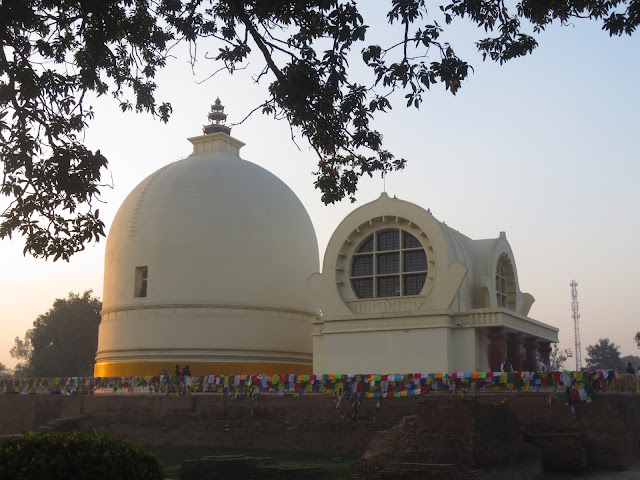Penang (Malaysia)
From my diary (April 2010)
On the evening of 17 April I’m
on the ferry, crossing the sound that separates the island of Penang, northwest
Malaysia, from Butterworth on the mainland, where my train from Kuala Lumpur
had arrived half an hour before; the lights of Penang’s
capital and administrative centre, George Town, beckon from the distance. Long
have I waited to visit this historical town, one of only two ‒ the other being Melaka/Malacca in the south ‒ that are included in the UNESCO list of protected Heritage Sites
in Malaysia.
The guesthouse I am in search of is
about a kilometre from the jetty where we arrive, so I decide to walk it, easy
to do when your baggage has wheels and the sun is no longer beating down on
you.
Walking along Jalan Chulia, one of the
main arteries of the old town, I realise I am somewhere special. To my left and right I see elegant mosques and Chinese or
Hindu temples, and several traditional shop-houses.
I arrive at the guesthouse at about 11
pm, and am shown the only room still vacant. It is fairly dirty (the sink looks
as though it hasn’t been cleaned in years),
but considering the lateness of the hour, I decide to take it anyway and to
look for a better place the following morning.
I go out to enjoy a dish of mee,
Chinese noodles, at one of the busy Chinese stalls that I find along the road
not far from the guesthouse. Such a pity that such inexpensive street food is
not at all common in Western Europe...
The following morning, I move to
another backpackers’ guesthouse nearby ‒ cheaper, more pleasant, and most importantly, cleaner ‒ that occupies an old Chinese shop-house. The room is
relatively big, with a wooden floor, a sink (which has been cleaned that very
morning), a double bed, a small table with a stool, and a fan on the ceiling
that will allow me to sleep relatively well in spite of the terrible heat. Having
settled in, I finally go out for a first ‘reconnaissance’
walk. Thus begins my discovery of the town.
George Town is an interesting place.
In a way it is similar to Malacca, the other Malaysian UNESCO World Heritage Site,
located south of Kuala Lumpur, even though George Town’s
earliest history does not date as far back as Malacca’s
15th century. Like the latter, however, George Town has been a
strategic port which has attracted a multiethnic and multireligious population coming
from many parts of Asia, the Arab world, the islands which now form Indonesia, and
from as far away as Thailand and China.
That legacy is still very much alive: it suffices to watch the people, the
buildings, the religions practised, and to listen to the sounds and the
languages spoken. Here, too, like in Malacca, there is a ‘Harmony
Road’, Jalan Masjid Kapitan Keling, so
called on account of the fact that as many as four different religious
buildings can be found here within short distance of each other: the Anglican church
St. George’s (1818), just north of the Chinese
temple dedicated to Guan Yin (1728), which is opposite the Hindu temple of Sri
Mahamariamman (1833), and finally the mosque of Kapitan Keling, built at the
beginning of the 19th century by the first Muslim Indian immigrants.
The name with which the road is known refers to the atmosphere of tolerance exemplified
by these religious buildings at close quarters, and existing among their
congregations...
 |
| Kek Lok Si Chinese Temple, Penang |
 |
| Reclining Buddha in Wat Chaiya Mangkalaram Thai Temple, Penang |
 |
| Dharmikarama Burmese Temple, Penang |
 |
| Big standing Buddha in Dharmikarama Temple, Penang |


Comments
Post a Comment